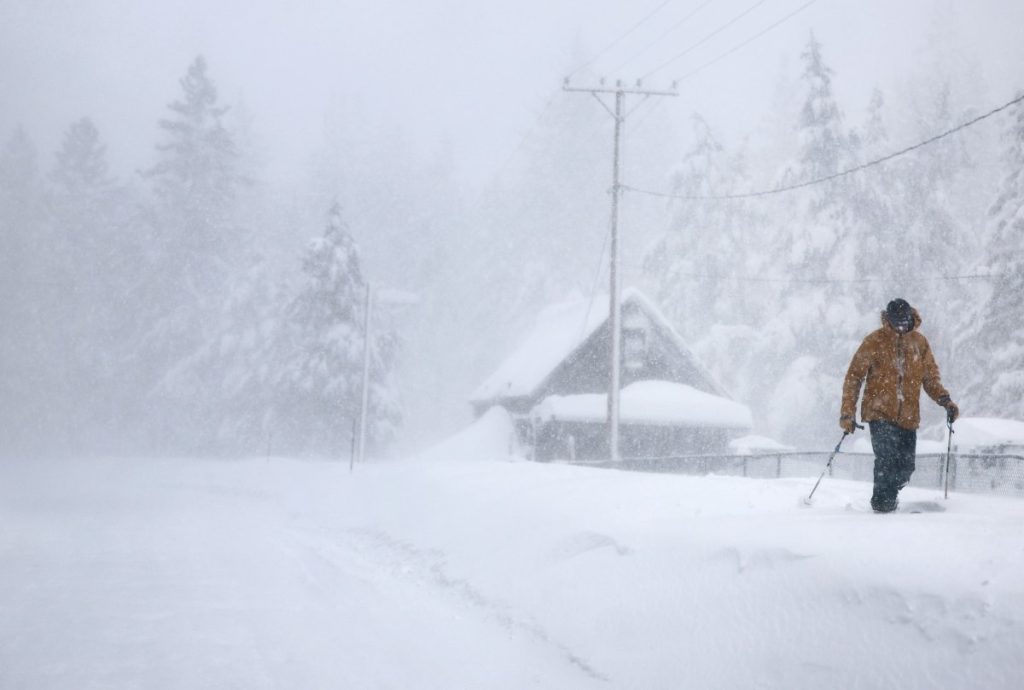If you’ve got travel plans through Scott Mountain Pass today, it’s time to be extra cautious. A Winter Weather Advisory has been issued for the area, with up to 6 inches of snow expected to accumulate as the day goes on. For anyone planning to hit the road, these snowy conditions could make travel tricky, especially in higher elevations where snow tends to stick around longer. Here’s everything you need to know to stay safe and prepared.
6 Inches of Snow: What to Expect on Scott Mountain Pass
Snowfall will be the biggest issue today, with up to 6 inches expected to fall in Scott Mountain Pass. As the snow starts to pile up, road conditions will quickly become hazardous. Visibility will be reduced, and the roads will be slick, making driving difficult—especially for those who aren’t used to navigating snowy, icy conditions.
If you have to be on the road, it’s crucial to know that snowy and slippery roads will make driving slower and more dangerous. If you’re not well-prepared, or if you’re not familiar with driving in snow, it’s better to avoid travel or delay your trip until the weather clears up. The snow will continue to accumulate throughout the day, so it’s best to get ahead of it if possible.
Why the Winter Weather Advisory Matters
A Winter Weather Advisory doesn’t just mean light snowflakes—it means dangerous travel conditions. The expected 6 inches of snow will cause significant slick roads and reduced visibility. The combination of these factors can make even familiar roads feel unsafe, and driving could quickly become unpredictable. That’s why it’s important to be extra careful today.
If you absolutely must drive through Scott Mountain Pass, make sure you’ve got the right gear for winter driving, like snow tires or snow chains. Take it slow, keep a safe distance between you and other vehicles, and be prepared for sudden patches of ice or snowdrifts. Winter weather can be sneaky—just because it looks clear in one spot doesn’t mean the next stretch of road won’t be covered in snow or slush.
What You Can Do to Stay Safe
-
Reconsider Your Plans – If you don’t absolutely have to be on the road, it’s best to stay home or find an alternate route. There’s no harm in waiting for conditions to improve, and your safety is worth more than getting somewhere quickly.
-
Prepare Your Vehicle – If you do need to travel, make sure your car is ready for winter conditions. Check your tires, ensure they’re properly inflated and rated for snow, and make sure you’ve got snow chains or winter tires on hand. Having a winter emergency kit with water, snacks, and warm blankets is also a smart idea in case you end up stuck for a while.
-
Slow Down and Drive Cautiously – Slow down and avoid any sudden movements. Snow can make your car slide unpredictably, so give yourself plenty of space between you and other vehicles. Stay alert for black ice or snowdrifts, which can appear quickly and without warning.
-
Be Ready for Falling Debris – The winds and snow could knock down branches, rocks, or other debris onto the road, making it even more dangerous. Keep your eyes peeled for anything that might be blown onto your path.
-
Stay Updated – Check the weather often, as conditions can change rapidly. Road closures or warnings may pop up, so staying informed is key to staying safe.
What’s Coming Later: Conditions Will Improve
The snow is expected to continue throughout the day, with up to 6 inches accumulating by evening. The Winter Weather Advisory will remain in effect until Thursday morning, when the snow should let up. By then, road crews will start clearing the roads, and conditions should improve. But until then, if you can avoid traveling through Scott Mountain Pass, it’s best to wait.
Takeaway: Safety First
Scott Mountain Pass will be a tough drive today, with heavy snow, icy roads, and reduced visibility making travel dangerous. If you can delay your trip or find an alternative route, do so. If you have to go through the area, prepare for winter conditions—equip your vehicle for snow, drive carefully, and stay alert.



